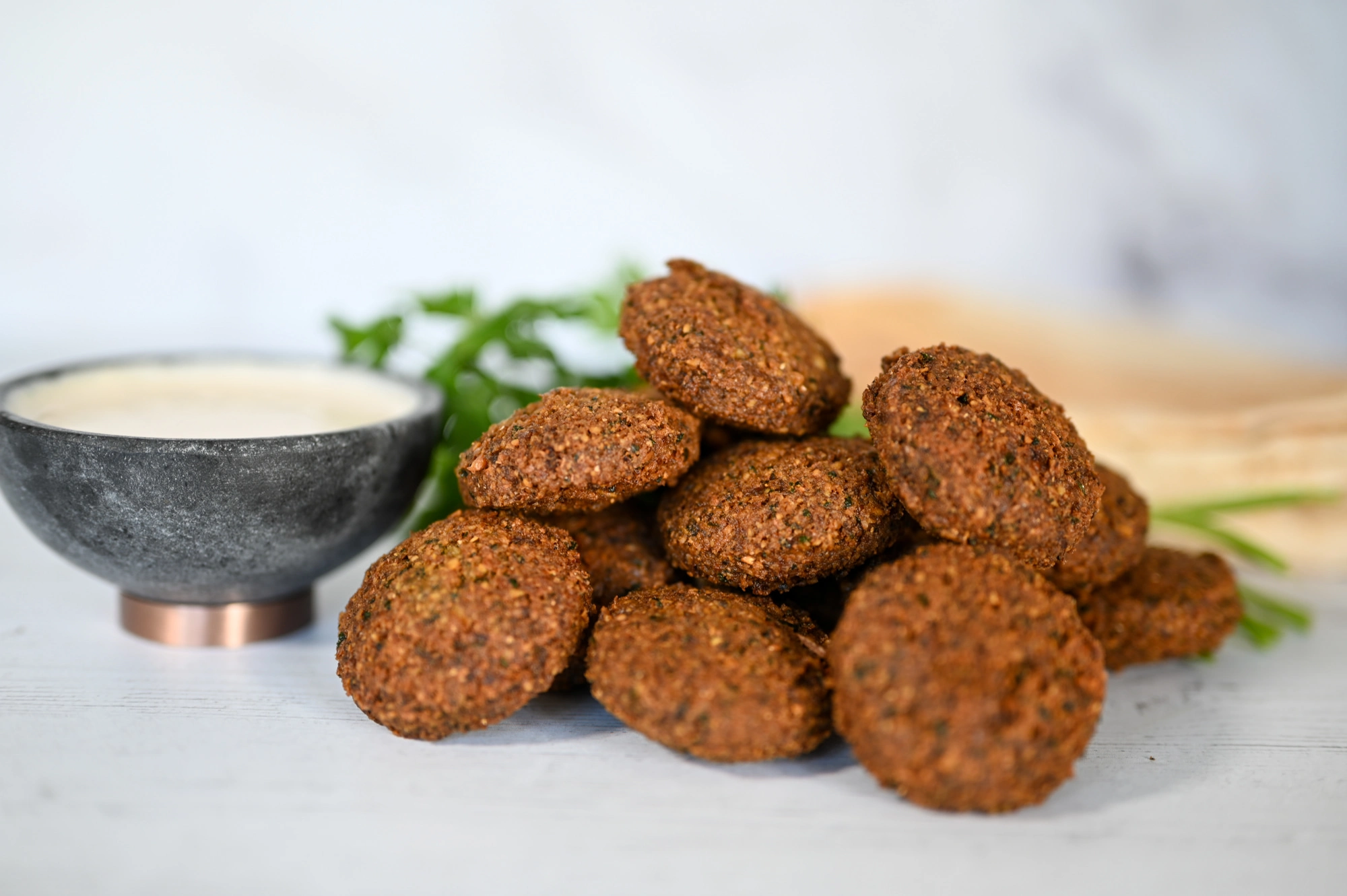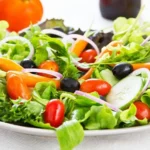
The debate over the origin of falafel spans across Egypt, Syria, and Palestine, with historical evidence supporting claims from each region dating back to the 12th and 13th centuries. This culinary dispute reflects the rich cultural tapestry of the Middle East, where food traditions intertwine with history and heritage. Each claimant brings forth compelling arguments rooted in their respective culinary traditions and historical narratives, adding depth to the ongoing discourse surrounding the beloved chickpea fritter.
The earliest known falafel recipe is attributed to the 13th-century cookbook by Ibn Sayyar al-Warraq, offering a tantalizing glimpse into the dish’s culinary heritage. Found within the pages of this ancient manuscript, the recipe provides invaluable insight into the ingredients and techniques used to create falafel centuries ago. Ibn Sayyar al-Warraq’s documentation marks a pivotal moment in the culinary history of the Middle East, immortalizing falafel as a cherished delicacy with enduring appeal.
With over 500 documented variations, falafel boasts a remarkable diversity that reflects the culinary creativity of the Middle East and Mediterranean regions. Each variation offers a unique twist on the classic chickpea fritter, incorporating local ingredients, spices, and cooking methods to create a culinary masterpiece. From Lebanon’s herb-infused falafel to Egypt’s vibrant green version made with fava beans, the multitude of falafel variations speaks to the dish’s adaptability and universal appeal.
Traditionally made from ground chickpeas, falafel showcases the versatility of this humble legume as a culinary staple. While chickpeas remain the primary ingredient, variations of falafel may feature alternative legumes such as fava beans, lentils, or even a combination of vegetables like peas and corn. This diversity of ingredients not only caters to dietary preferences but also highlights the rich tapestry of flavors and textures found within the world of falafel.
A single serving of falafel, approximately 100 grams, packs a powerful punch with around 12 grams of protein, primarily derived from its chickpea base. This protein-rich content makes falafel a satisfying and nourishing option, particularly for vegetarians and vegans seeking alternative sources of protein in their diet. Additionally, the protein content contributes to a feeling of fullness and satiety, making falafel a hearty and satisfying meal choice.
Falafel serves as a fiber powerhouse, offering approximately 6 grams of dietary fiber per serving. This significant fiber content contributes to digestive health, promoting regularity and aiding in the prevention of constipation. Furthermore, dietary fiber plays a crucial role in maintaining healthy cholesterol levels and regulating blood sugar levels, making falafel not only delicious but also beneficial for overall well-being.
Traditionally deep-fried in oil, falafel can also be baked as a healthier alternative, reducing its calorie content while retaining its delicious flavor and crispy texture. However, it’s worth noting that deep-fried falafel typically contains around 300-400 calories per serving, making it a moderately calorie-dense food choice. By opting for baked falafel, individuals can enjoy this beloved dish with fewer calories and less fat, making it a suitable option for those mindful of their dietary intake.
The discovery of chickpea fritters resembling falafel in ancient Egyptian tombs suggests that falafel-like snacks have existed for thousands of years, predating the documented history of the dish. This archaeological evidence sheds light on the enduring popularity of falafel throughout the ages, serving as a testament to its timeless appeal and cultural significance in the region.
In 2010, Lebanon made culinary history by creating the largest falafel patty ever recorded, weighing an astonishing 661 pounds (300 kg). This monumental achievement not only showcased Lebanon’s culinary prowess but also highlighted the global fascination with falafel as a beloved street food and culinary delicacy.
Israel is renowned as the world’s leading consumer of falafel, with an estimated annual consumption exceeding 11,000 tons. This voracious appetite for falafel underscores its status as a cultural icon and beloved national dish in Israel, where it is enjoyed by people from all walks of life. Whether served in pita bread or as part of a platter with an array of delicious accompaniments, falafel holds a cherished place in the hearts and palates of Israelis across the country.
Falafel Day, celebrated annually on June 6th, is a testament to the worldwide adoration for this cherished culinary creation. This designated day honors the rich cultural heritage and universal appeal of falafel, inviting enthusiasts from all corners of the globe to indulge in its savory delights. Whether enjoyed as a street food snack or as part of a festive meal, Falafel Day serves as an opportunity to savor and celebrate the flavors and traditions associated with this beloved dish.
The advent of the falafel food truck craze in 2007 revolutionized street food culture, offering a convenient and mobile platform for serving up this delectable treat. With the opening of the first falafel food truck in New York City, a culinary phenomenon was born, igniting a nationwide trend that continues to thrive today. These mobile vendors bring the irresistible aroma and flavors of falafel to bustling city streets, delighting foodies on the go with their crispy, golden-brown fritters.
In 2011, a Dubai restaurant captured the world’s attention by unveiling the “millionaire’s falafel,” an extravagant creation wrapped in 24-carat gold leaf and priced at an astounding $1,000. This luxurious interpretation of the humble chickpea fritter epitomized culinary opulence, catering to the tastes of affluent diners seeking a taste of extravagance. While far removed from the traditional street fare, the millionaire’s falafel showcased the dish’s ability to transcend cultural boundaries and elevate to new heights of culinary indulgence.
In a poignant display of solidarity and goodwill, Israelis and Palestinians came together in 2008 to create the world’s longest falafel line, stretching for over a mile in a symbolic gesture of unity and cooperation. This monumental event, which brought people from diverse backgrounds together in a shared celebration of falafel, served as a powerful reminder of the dish’s ability to foster connections and bridge divides. Amidst the complexities of the region’s political landscape, the simple act of sharing falafel became a beacon of hope for a future built on mutual respect and understanding.
Nestled within Jerusalem’s historic Old City lies a narrow alley known as “Hout al-Zeit” (Olive Oil Lane), affectionately dubbed “Falafel Alley” due to its abundance of falafel restaurants. This bustling thoroughfare serves as a culinary mecca for falafel enthusiasts, offering a tantalizing array of options to satisfy every palate. From traditional family-owned eateries to modern fusion joints, Falafel Alley pulsates with the vibrant energy and aromas of this beloved Middle Eastern delicacy.
In a nod to its cultural significance and enduring popularity, falafel was inscribed on UNESCO’s Representative List of the Intangible Cultural Heritage of Humanity in 2017. This prestigious recognition affirmed falafel’s status as a cherished culinary tradition with deep roots in the Levant region and beyond. By acknowledging falafel’s cultural heritage, UNESCO celebrated the dish’s ability to foster social cohesion, promote dialogue, and preserve intangible cultural practices for future generations to cherish and enjoy.
The United Kingdom ranks as the world’s second-largest consumer of falafel, with the vibrant city of London leading the charge with over 1,000 falafel shops catering to a diverse population of falafel aficionados. From bustling markets to trendy eateries, falafel has become a ubiquitous presence on the British culinary scene, capturing the hearts and taste buds of locals and visitors alike. London’s thriving falafel culture reflects the city’s multicultural identity and its embrace of global gastronomic trends.
Within the falafel community, a spirited debate rages on over the preferred serving method: pita pocket or wrap. Advocates on both sides of the culinary divide passionately defend their chosen presentation, citing factors such as texture, portability, and flavor integration. While some swear by the traditional pita pocket, arguing that it provides the perfect vessel for encasing falafel and condiments, others champion the wrap for its convenience and versatility. Despite the differing opinions, one thing remains certain: whether served in a pocket or a wrap, falafel never fails to delight the taste buds.
A hallmark of falafel’s culinary appeal lies in its versatility, offering a myriad of toppings and condiments to customize each bite. From creamy tahini sauce to velvety hummus, crisp chopped vegetables, and tangy amba (pickled mango sauce), the options for enhancing falafel are virtually endless. These flavorful accompaniments add depth and complexity to the dish, elevating it from a simple street snack to a gourmet culinary experience that tantalizes the senses.
Beyond its delectable taste and satisfying texture, falafel boasts impressive nutritional credentials, making it a wholesome choice for health-conscious consumers. Rich in iron, with a 100g serving providing approximately 3.6 mg of this essential mineral, falafel supports healthy red blood cell production and oxygen transport throughout the body. Additionally, falafel’s vegan and gluten-free status appeals to individuals with dietary restrictions, offering a guilt-free indulgence that nourishes the body and delights the palate.
Falafel Festival Fun: Throughout the year, several countries and cities host falafel festivals, celebrating this beloved culinary delight in all its glory. These festive gatherings offer an opportunity for falafel enthusiasts to come together and indulge in an array of mouthwatering falafel creations, from traditional recipes to innovative variations. With live music, cultural performances, and cooking demonstrations, falafel festivals provide a vibrant and festive atmosphere where food lovers can immerse themselves in the rich flavors and traditions of falafel.
Falafel and Fitness: As a rich source of protein, falafel plays a valuable role in supporting muscle building and repair, making it a popular choice among fitness enthusiasts and athletes. Whether enjoyed as a post-workout snack or incorporated into a balanced meal, falafel provides the essential nutrients needed to fuel an active lifestyle. With its satisfying taste and nutritional benefits, falafel offers a delicious and convenient way to refuel and recharge after a workout or physical activity.
Home-Made Falafel Rise: The growing popularity of falafel has led to a rise in homemade versions, as people experiment with various ingredients and cooking methods to create their own culinary masterpieces. From traditional recipes passed down through generations to innovative twists inspired by global cuisine, homemade falafel offers a personalized touch that reflects individual tastes and preferences. Whether baked, fried, or air-fried, homemade falafel allows cooks to unleash their creativity in the kitchen and tailor each batch to their liking.
Falafel Fixings: While falafel shines on its own, it truly comes to life when paired with a variety of flavorful toppings and condiments. From tangy tahini sauce to creamy hummus, crunchy chopped vegetables, and zesty pickled mango sauce, the possibilities for falafel fixings are endless. These delicious accompaniments add layers of texture, flavor, and freshness to each bite, transforming falafel into a culinary sensation that tantalizes the taste buds and satisfies the senses.
Vegan Delight: Falafel’s natural vegan and gluten-free status make it a favorite choice among individuals following plant-based or gluten-free diets. Made from wholesome ingredients like chickpeas, herbs, and spices, falafel offers a nutritious and flavorful alternative to traditional meat-based dishes. Whether enjoyed in a salad, wrap, or bowl, falafel provides a satisfying and wholesome meal option that caters to a diverse range of dietary preferences and restrictions.
5 FAQs about Falafel:
What is falafel made of?
Falafel is traditionally made from dried chickpeas, also called garbanzo beans. The chickpeas are soaked overnight to soften them, then ground into a coarse meal with fresh herbs like parsley and cilantro. Common spices include cumin, coriander, and garlic. The mixture is then formed into balls or patties and cooked. Falafel can be deep-fried for a crispy exterior, or baked for a healthier option. Some variations include fava beans or lentils in place of chickpeas, and some may add chopped vegetables like onions or peppers for extra texture.
Is falafel healthy?
Falafel can be a healthy food choice, especially when baked instead of deep-fried. Chickpeas, the main ingredient, are a good source of plant-based protein and fiber. Falafel is also naturally vegan and gluten-free. However, be mindful of the toppings and accompaniments. Deep-frying adds calories and fat, and tahini sauce, a popular falafel condiment, is high in calories. Pair your falafel with a side of fresh vegetables and a lighter sauce for a well-balanced and nutritious meal.
What is the difference between falafel and falafel wraps?
Falafel itself refers to the chickpea fritters. A falafel wrap is a complete meal made with falafel tucked inside a pita bread or wrap, along with various toppings and fillings. Here’s the breakdown:
Falafel: The chickpea fritters themselves.
Falafel Wrap: A pita bread or wrap filled with falafel, vegetables, hummus, tahini sauce, and other desired toppings.
What are some popular ways to eat falafel?
Falafel is a versatile food that can be enjoyed in many ways:
In a Pita Bread Wrap: This is the most common way to enjoy falafel. The falafel is placed in a pita bread pocket with chopped vegetables, hummus, tahini sauce, and other toppings like pickled onions or hot sauce.
On a Plate with Salad: Falafel can be served on a bed of lettuce, tomatoes, cucumbers, and other chopped vegetables for a lighter and fresher option.
As a Bowl Meal: Falafel can be served over rice or quinoa with chopped vegetables, hummus, and a tahini dressing, creating a satisfying and protein-rich bowl.
As a Snack: Falafel can be enjoyed on its own as a healthy and protein-packed snack.
What are some variations of falafel around the world?
Falafel has many variations across the Middle East and Mediterranean regions. Here are a few examples:
Egypt: Falafel in Egypt is typically made with fava beans instead of chickpeas and is known as ta’amiya.
Israel: Israeli falafel is usually made with a higher proportion of chickpeas and may contain chopped vegetables in the mixture.
Lebanon: Lebanese falafel tends to be smaller and spicier than other variations.








